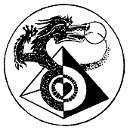
The World of Tibetan Pulsing
& Tibetan Pulsing Resources Worldwide
What is Tibetan Pulsing Yoga? (Continued)
Tibetan Tantric Yoga
The Buddha lived in India, but since his day Buddhism has spread to many other countries. In both India and Tibet, an advanced branch of Buddhism developed which was called Tantric Yoga. In a nutshell, it was discovered that one very effective way towards self-realization and meditation is not to go and sit in a cave on your own, but rather to meditate with other people and in this way assist each other.
Tibetan Pulsing Yoga forms a modern branch of this ancient tradition. To quote one author on Tibetan Pulsing, "Old tradition. . . new style." Or, to quote another author, we could say that "Shantam Dheeraj translated the ritual practices of the Tibetan monasteries into a modern understanding more easily comprehended by the Western mind" - by rediscovering the wisdom of certain ancient schools of Tibetan Tantric Yoga in a revolutionary new manner.
Tantra makes use of the sexual energy, but this is a practice which needs to be clearly explained, because Tibetan Pulsing Yoga is not sexual. When exchanging Tibetan Pulsing Yoga sessions, Tibetan Pulsers don't remove any clothing or engage in any sexual activity. The purpose of tantra is to re-direct the kundalini (source of our sexual energy, or life-energy, in the base chakra) out of the sexual organs so that we can instead mobilise this powerful and healing life-force in other areas of the body, specifically the various acupressure points all round the body which are pressed and held during Pulsing sessions.
Tantric Yoga in general involves raising our kundalini (sexual energy) up through the body for the purposes of meditation and healing, rather than leaving it to be expressed only through our sexuality. In the process of being raised in this way, it takes on a new flavour, one of a deeply relaxing state of meditation and inner transformation, such as the one pictured millions of times all over the world in the image of the Buddha sitting cross-legged in deep meditation, tranquility and bliss.
Tibetan Pulsing Yoga in particular is a sub-branch of Tantric Yoga which focuses uniquely on the use of techniques such as acupressure points, sound and colour to help induce deep states of meditation and transformation. Specifically, and most importantly of all, the sexual energy is diverted upward through the pulsebeat of the heart to create a new fusion which combines the kundalini with the energy of the heart.
A meditative combination of our sexual energy with the pulsebeat of our hearts thus creates the gentle power to dissolve blockages in the bio-electrical flow which runs our nervous system. This positive input, applied via a vast network of acupressure points around the body used in specific combinations, neutralizes pain, suffering and anger through deep relaxation. Our fears are transformed into bliss, pleasure and joy.
Previous page What is Tibetan Pulsing Yoga? Next page
1 2 3 4 5 6 7 8 9 10 11 12 13 14 15
Sister Sites Maintained as Educational Resources by the Same Authors:
Link to: FCT World - First Prepare Your System for Yoga & Meditation Using the Unique & Powerful System of Medicine called Field Control Therapy Link to: Key Toxins - Exclusive Articles, Info & Interviews about Toxicity, the World's Most Pressing Issue
Link to: See What Is There - Wide-Ranging Humanitarian Web Resource, of Which Tibetan Pulsing World is Part Link to: Deep Energy Healing - Resources on Different Therapies, the Nature of Healing and the Future of Medicine
© Copyright 2007 Simon Rees and Tibetan Pulsing World. Disclaimer: The information at this website is not intended to be a substitute for professional medical advice, diagnosis or treatment. Always seek the advice of your doctor with any questions you may have regarding a medical condition. The content of this website comprises only the observations and opinions of the authors and contributors: it does not constitute medical advice to readers.
